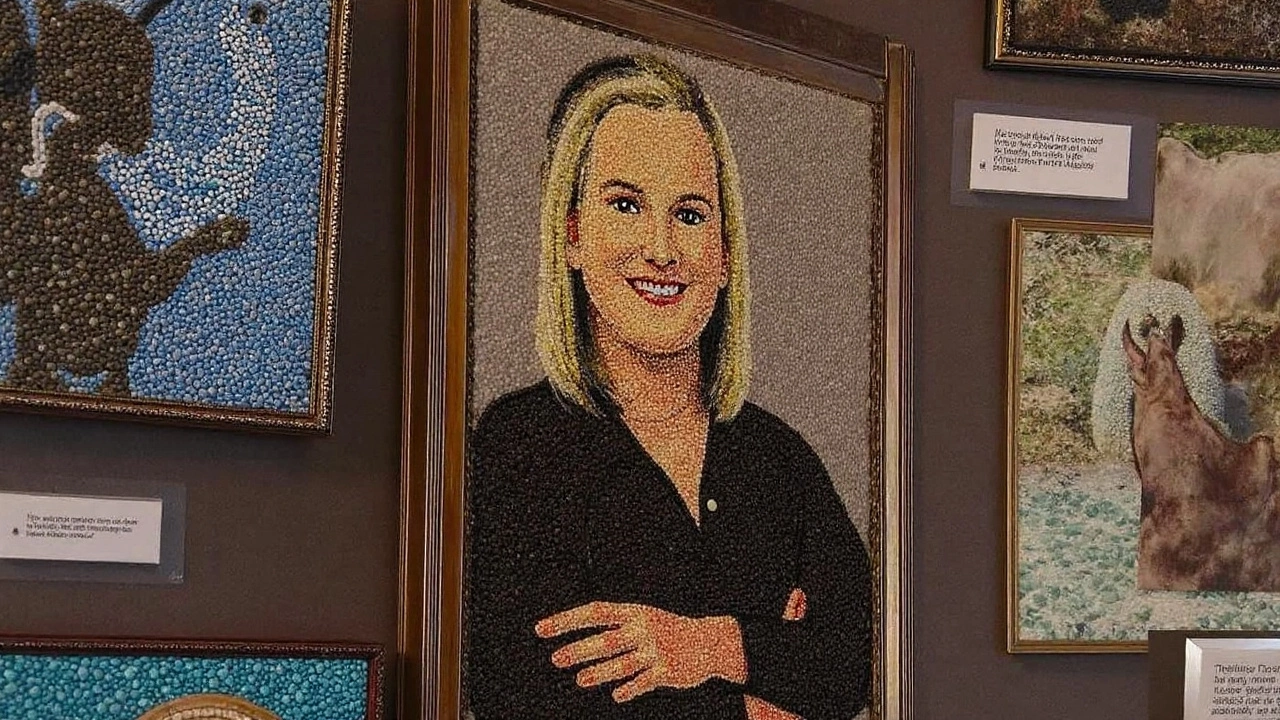Seed by seed, a portrait of grief and grace
The line moves slowly in the Agriculture Horticulture Building at the Minnesota State Fair. People lean in, read the caption, and go quiet. The portrait is familiar: a poised lawmaker looking straight at the viewer. But look closer and you see the medium—beans, millet, flax, and corn glued one by one. It’s a seeded rendering of Melissa Hortman, the Minnesota House Speaker Emerita, who, along with her husband Mark, was killed in a tragedy that left friends, colleagues, and strangers grieving.
In the weeks that followed, grief found an outlet in an unlikely place: crop art. Rep. Athena Hollins, who picked up the craft three years ago, rallied fellow House members and friends to build a tribute that felt true to both Hortman’s public service and Minnesota’s deep agricultural roots. Their entry—a seeded version of Hortman’s official legislative photo—came with two words that turned the display into a message: “Sow Love.”
The phrase wasn’t random. It comes from the well-known prayer attributed to St. Francis of Assisi—“Where there is hatred, let me sow love.” At Hortman’s funeral, mourners learned she carried a copy of the prayer folded in her purse every day. The team chose the words for the banner because they captured her approach to politics and people: not loud, not flashy, steady and constructive.
The piece placed second in its category, but the ribbon was never the point. The group cared more about the act of making—hours at tables with Elmer’s glue, toothpicks, and bowls of seed, trading memories and sitting with the silence when words ran out. Several described the process as a kind of meditation. The repetitive work kept hands busy and minds focused, softening the edges of loss.
Crop art is a uniquely Minnesota language for remembrance. The fair’s gallery has always been a roll call of prairie ingenuity—coneflowers in canola, cabins in barley, state birds in buckwheat. This piece added something more intimate: a public life captured with kitchen-shelf materials that anyone can touch. In a year crowded with hard headlines, thousands of fairgoers stopped to look, some wiping their eyes before moving on to the next display.

How a community stitched itself back together
Hollins didn’t plan a grand production. She simply opened her table. Colleagues from the House filtered in after committee meetings and district visits. Staffers came by on lunch breaks. Friends who had never lifted a toothpick for art before learned the basics in minutes. The work was careful and slow, but the gathering built its own momentum.
Here’s how the portrait came together, according to participants:
- Materials were kept simple: white glue, toothpicks for placement, and an assortment of seeds sorted by color and texture.
- They started with a printed grid of the portrait, then mapped shadows and highlights with darker and lighter seeds.
- Facial details took the longest; hair and background followed. The banner with “Sow Love” went on last, so it would sit cleanly on top.
- Each session ended with a quick clean-up, a photo, and a plan for the next stretch of work.
The seed choices mattered. Dark beans gave the portrait definition; pale millet brightened the highlights; flax added warmth. None of it was fancy, and that was the point. As one participant put it during a work session, the medium matched the message—ordinary things, placed with care, can hold a lot of love.
At the fair, visitors encountered the finished portrait the way most Minnesotans meet their leaders: not on a stage, but at eye level. Some snapped photos and moved on. Others stood still for a long time, reading the small card, tracing the lines with their eyes. The reaction wasn’t just about politics. It was about a shared sense of loss and the relief of seeing it acknowledged in public, without speeches.
The phrase “Sow Love” did extra work in that setting. It threaded together what Hortman valued—service, patience, daily effort—with the state’s farming heritage. Planting is a promise you make to the future, and the portrait made that promise visible. It asked people to carry the phrase beyond the building, into their conversations and their neighborhoods.
Crop art has always been a conversation between maker and viewer. This piece widened the circle. People who never met Hortman still felt connected—to a story about leadership, to a shared Minnesota identity, to the act of doing something gentle in response to something cruel. You don’t fix grief with a plaque or a program. You live with it, and you make things that help you keep going.
By the end of the fair, the portrait had done what it set out to do. It honored a life and a partnership cut short. It gave the people who knew Hortman a place to put their hands and their hearts for a while. And it offered everyone else a simple instruction they could remember on the walk back to the Midway or the bus stop: sow love, even now—especially now.
